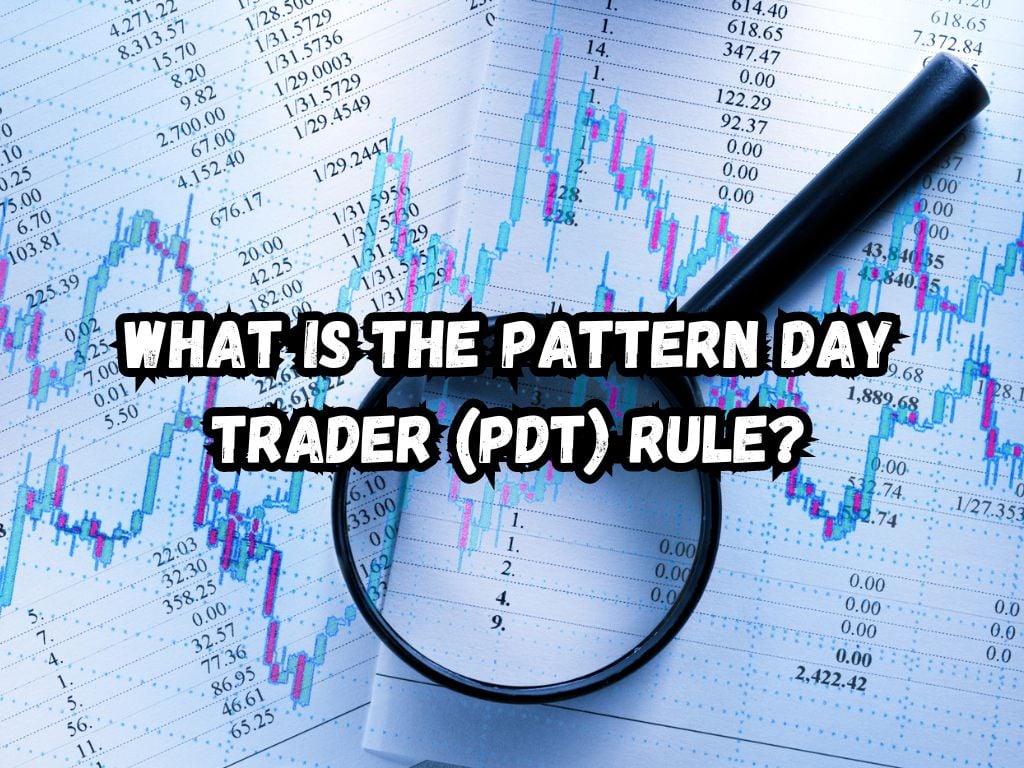Day trading requires precision, agility, and strict adherence to certain regulatory rules. The Pattern Day Trader (PDT) rule stands as a pivotal regulation, essential for every trader in the stock market.
Its implications are vast, affecting factors from the size of the trade to the types of strategies employed. We’ll delve deeply into the rule, uncovering every aspect to offer a thorough understanding.
Day trading, the act of buying and selling securities within the same trading day, remains popular among market participants. This trading method attracts individuals seeking to make quick profits from market movements. So, what is the pattern day trader rule?
Within this dynamic environment, the PDT rule serves as a guiding regulation. Understanding its nuances is indispensable for anyone looking to day trade in adherence to the regulations.
What Is the Pattern Day Trader Rule?
The Financial Industry Regulatory Authority (FINRA) defines a Pattern Day Trader as an investor who executes four or more day trades within five business days.
The rule applies if these trades encompass more than six percent of the trader’s total trading activity for that same five-day period. Predominantly, it targets those using margin accounts, imposing requirements for a minimum amount of equity.

Requirements and Restrictions Under the PDT Rule
Equity Requirement
A cornerstone of the PDT rule is the $25,000 minimum equity requirement for margin accounts. The rule specifies that this equity, which can be any combination of cash and securities, must be in the trader’s account prior to any day-trading activities.
This foundation serves as a buffer to absorb potential losses that are inherent to high-risk trading.
Day Trade Limits
Crossing the threshold of four day trades in five business days triggers the designation of a Pattern Day Trader. When this line is crossed, higher maintenance requirements kick in.
Such traders must maintain the necessary $25,000 equity level or risk the restriction of their ability to place further trades.
Margin Account Features
Margin accounts allow traders to borrow funds to trade securities. This financial leverage is a double-edged sword; it can amplify profits as seamlessly as it can magnify losses.
This increased risk factor is why the PDT regulation singles out margin account traders for special consideration.
Restrictions and Penalties
Non-compliance with the PDT requirement can lead to significant restrictions on an investor’s trading activities.
If the account fails to hold the required equity, traders might face a hold on future trading or, in certain cases, be subject to penalties such as account suspension, necessitating a restoration of the minimum equity before trading can resume.
Strategies to Manage or Avoid PDT Restrictions
Active traders can manage or bypass the constraints enforced by the PDT rule through various approaches. Carefully pacing trade frequency to remain below the four-trade limit is one viable strategy.
Some might use multiple brokerages to distribute their trade volume; however, this method requires a grasp of both the legal implications and the challenges it may introduce.
Traders sometimes pivot toward longer-term trading methods, such as swing trading, to circumvent the stringent requirements of day trading altogether.
Impact of the PDT Rule on Traders
Pros
Advocates for the PDT rule contend that it mitigates the risk for individual investors.
By imposing the $25,000 barrier, the rule aims to ensure that traders have enough financial resilience to withstand the potential volatility associated with day trading.
Cons
Conversely, many traders argue that the PDT rule imposes limitations that can stifle the growth of small trading accounts.
It may force inexperienced traders to position themselves in riskier, longer-held trades, which contradicts the rule’s original purpose.
How to Legally Bypass the PDT Rule
Seeking a way around the PDT rule doesn’t require stepping outside the bounds of legality. Opting for a cash account negates the application of the rule, providing a straightforward alternative.
Yet, trading in cash accounts means adhering to the T+2 settlement rule; funds from trades need two days to settle before they can be deployed again.
An additional approach is to trade with international or offshore brokers, though this might introduce other risks requiring careful consideration.
Common Misconceptions About the PDT Rule
Misunderstandings can circulate within the trading community, especially concerning regulatory rules. For instance, the notion that being labeled a Pattern Day Trader entirely halts the ability to trade is incorrect.
The rule primarily concerns the classification of the account and the necessity to maintain a certain equity level to allow day trading to continue unimpeded.

Pro Tips
Keep your day trade count in constant check, especially as you near the limit. Consulting with a financial advisor can help tailor the PDT rule to your trading approach.
Lastly, paper trading or trading simulations offer a practical avenue to hone your trading skills without any financial risk.
This comprehensive guide equips traders with the knowledge to navigate the complexities of the Pattern Day Trader rule, ensuring that their trading journey adheres to regulatory requirements while still striving for maximum market success.
Frequently Asked Questions
What happens if I accidentally become a pattern day trader?
Unintentionally surpassing the day trade limit will lead to a broker alert. They’ll likely request the enhancement of the account’s equity to fit within the Pattern Day Trader requirements.
Can I request a PDT reset, and if so, how often?
Brokerages typically permit a PDT reset once every 90 days or more. Policies differ between firms, making it crucial to consult directly with your broker for specifics.
Does the PDT rule apply to cryptocurrency trading?
Stocks and options are the primary focus of the PDT rule. Cryptocurrency markets, with their separate regulatory bodies, do not come under the jurisdiction of FINRA’s PDT regulation.
Are there any specific strategies to effectively trade under PDT restrictions?
Yes. Traders can engage in strategies that extend beyond a single day, such as swing trading, or focus on a reduced number of higher-quality trades that fit within the day trade parameters.
Can I trade in a cash account to avoid PDT rules, and are there limitations?
Trading in a cash account circumvents the PDT rule. But, the need for trades to settle could restrict how often funds can be used for trading.
Conclusion
A detailed understanding of the Pattern Day Trader rule is imperative for day traders. While it introduces some trading boundaries, it also embodies the principle of risk management within trading.
Through strategic planning and thorough navigation, traders can operate within the confines of the PDT rule, optimizing their potential while remaining compliant.


 Tags:
Tags:










